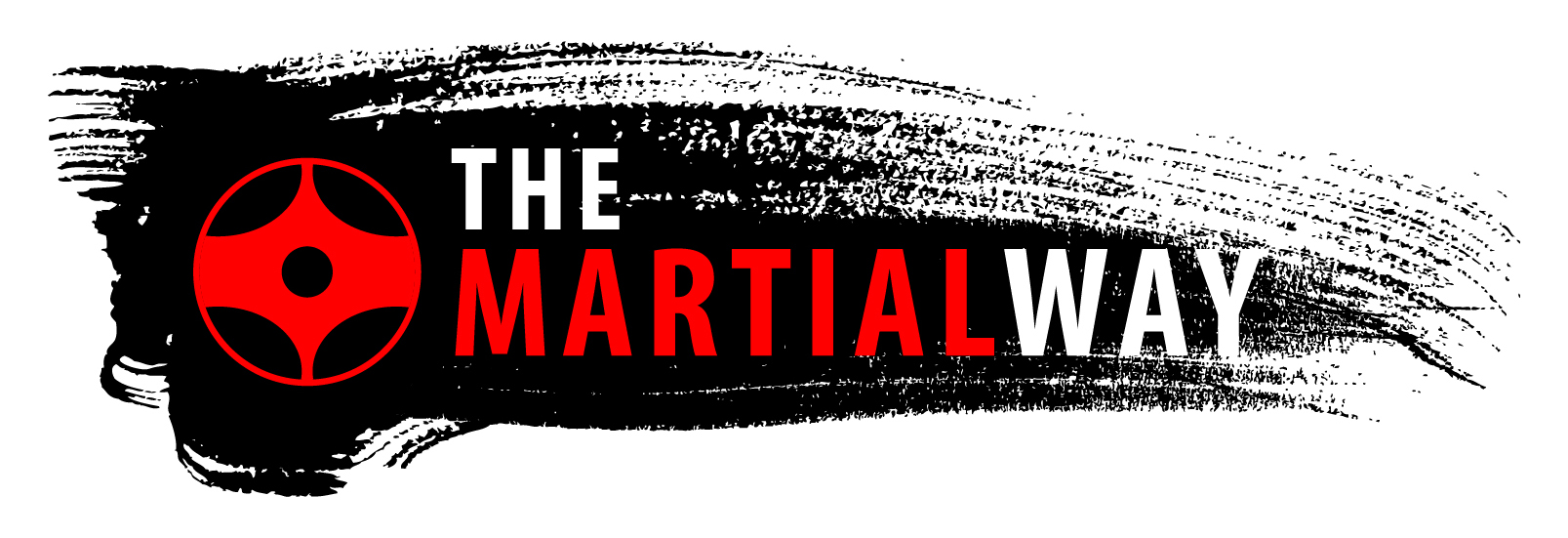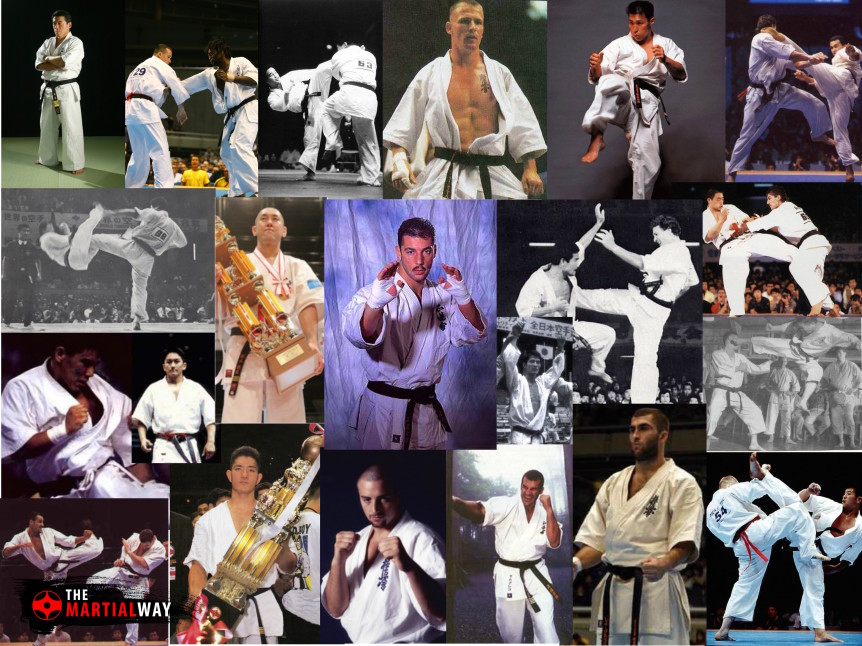We made it! The final four of the 20 Greatest Kyokushin Fighters of All Time. As I have stated before (and before you send emails and comments), PLEASE know this is by no means the definitive list, I am sure there are names missing, but I have done my best to complete the list with fighters based mainly on achievement, quality of competition and technical skill. The list is in no particular order, as it’s next to impossible to select one fighter over another, and further, it is something that no one would agree on.
The 20 Greatest Kyokushin Karate Fighters of All Time was first published by Liver Kick in 2013, with #20-17. This past year I continued the list for them #16 – 13. As mentioned in my an earlier post, due to time commitments I wasn’t able to complete the list, until now. However, I decided to post the remainder of the list here on my own blog.
So far we have:
#20: Gary O’Neill
#19- Lechi Kurbanov
#18- Nicholas Pettas
#17- Ryu Narushima
#16: Makoto Nakamura
#15: Sam Greco
#14: Takashi Azuma
#13 Norichika Tsukamoto
#12: Kenji Kurosaki
#11: Hiroki Kurosawa
#10: Glaube Feitosa
#09: Shokei Matsui
#08: Kenji Yamaki
#07: Francisco Filho
#06: Hitoshi Kiyama
#05: Ewerton Teixeira
Here now are the final four!
04: Terutomo Yamazaki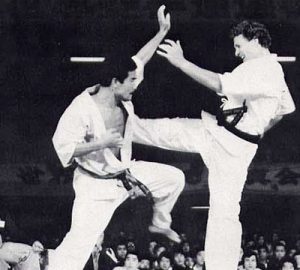
Achievements
- 1973: Fifth All-Japan Full Contact Karate Open Championships – 2nd place
- 1972: Fourth All-Japan Full Contact Karate Open Championships – 4th Place
- 1970: Second All-Japan Full Contact Karate Open Championships – 2nd place
- 1969: First All-Japan Full Contact Karate Open Championships – 1st place
Terutomo Yamazaki, nicknamed “The Genius Karate Fighter” and “The Dragon of Kyokushin”, was the most popular fighter of his time.
Born in 1947, he began the study of Kyokushin Karate as a student in high school at the headquarters (Honbu) of the Kyokushin Kaikan at Ikebukuro, Tokyo, under the founder, Masutatsu Oyama. Yamazaki practiced alongside fellow students Shigeru Oyama, Yasuhiko Oyama, Tadashi Nakamura and Hideyuki Ashihara.
Yamazaki was the first champion of the All-Japan Full Contact Karate Open Championships, held in 1969. Because he fought and defeated Muay Thai boxers, he created a reputation for Kyokushin before the First All-Japan Open Full Contact Karate Championships was even held.
Kickboxing was very popular in Japan between 1965 and 1975, when it was broadcast across the country on all major stations. TV Asahi requested a fighter from Kyokushin in February of1969, and Masutatsu Oyama elected Yamazaki and Yoshiji Soeno to enter the competitions. At the first competition, Yamazaki fought Kannanpai, one of the strongest boxers of Muay Thai, and knocked him out with a right cross in the first round. Yamazaki fought and also knocked out Samanso in the first round.
Yamazaki began learning Muay Thai after, to improve and add to his karate, concentrating on the front kick, roundhouse kick, elbow and knee strikes.
Yamazaki continued competing in Kickboxing for one year. He fought ten kickboxing matches in all, with a record of eight knock out wins and two losses (on decision). He then returned to full-contact karate.
Yamazaki worked as a television producer after graduating from university, and thus his karate training took bit of a back seat, after the Second All-Japan Open Championships. He wasn’t planning on competing any more, but Masutatsu Oyama requested that Yamazaki would compete in the Fourth All-Japan Open Championships, because Yamazaki’s very popularity. Yamazaki returned to competition at the Fourth All-Japan Open Championships in 1972, placing 4th.
In 1973 Yamazaki returned to the Fifth All-Japan Full Contact Karate Open Championships, and many were concerned because he didn’t have a chance to train sufficiently before the competition. However, Yamazaki won five matches by strength and by overwhelming his opponents. His final opponent was Hatsuo Royama. Royama was a specialist in low roundhouse kicks and he had practiced extensively before this championship. Although Yamazaki was under-trained, the match was almost even, and Royama won on a decision. The final was one of the best matches ever in Kyokushin, becoming legendary. All concerned in Kyokushin and the mass media said “Yamazaki is a genius” at what he does. He retired after the 5th All Japan Open to concentrate on his career.
Yamazaki established his own dojo, which was managed by volunteers because Yamazaki did not wish to earn money by professional karate. For this reason, the dojo was not called Kyokushin but instead Fuurinkazan (風林火山) from his hometown hero Shingen Takeda. He founded a non-profit organization called International Budo Karate Organization Gyakushin-Kai (逆真会館) in 1995. He continues to manage this organization.
03: Kenji Midori 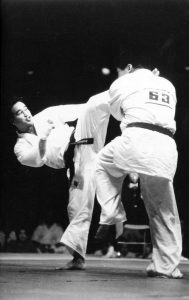
Achievements:
- 1991: 5th Kyokushin Karate World Tournament – 1st place
- 1990: 22nd All Japan Tournament – 2nd place
- 1990: 7th All Japan Weight Tournament – 1st place
- 1988: Sursee Cup – 2nd place (Lost toAndy Hug)
- 1987: 4th Kyokushin Karate World Tournament – Last 16 (Lost toMichael Thompson)
- 1987: 4th All Japan Weight Tournament – 1st place
- 1985: 17th All Japan Tournament – 5th place
- 1985: 2nd All Japan Weight Tournament – 1st place
Kenji Midori, nicknamed the “Little Giant”, was born April 18, 1962 on the island of Amami Oshima, to the family of a prominent businessman. Having finished the secondary school in 1976, Midori moved to Tokyo in order to prepare for the University. In that same year Midori started training Kyokushin Karate under the guidance of the famous Kyokushin Karate-ka and teacher, Tsuyoshi Hiroshige.
Midori began competing in 1980 and for the next 10 years placed in the All Japan tournaments. At the beginning of 1991 Midori’s father wanted to transfer the management of the family business, a large building company, to his son. Kenji returned home and took over the leadership of the company. On the threshold of the 5th Kyokushin Karate World Championship the founder of Kyokushin Karate, Masutatsu Oyama, went to Amami Oshima to persuade Midori’s father to give his son the chance to become the world champion. He told him: “Your son has the abilities to become a world champion. How do you feel about your son being fully focused on karate before the world championship? I really ask you to agree.” The father could not say no to the special guest. On November 4th, 1991 Kenji Midori became the winner at the 5th Kyokushin Karate World Championship.
As the lightest winner ever of the World Championship, Midori was known for amazing flexibility, speed and power of his kicks, with the ability to overwhelm much larger opponents.
After the death of Masutatsu Oyama, the founder of Kyokushin Karate, the International Karate Organization initially broke into several groups, one of which is known as World Karate Organization Shinkyokushinkai. Kenji Midori took over the organization and under his leadership the organization formally changed its name to WKO Shinkyokushinkai in 2003. Today, Midori holds the position of Kancho (President) of the WKO Shinkyokushinkai.
02: Hajime Kazumi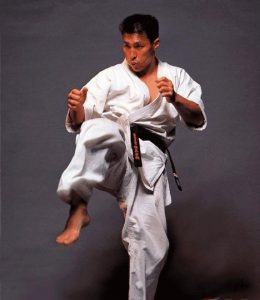
Achievements
- 2nd World Weight Tournament 2001 (IKO1) – 1st Place
- 7th World Open Tournament 1999 (IKO1) – 2nd Place (Lost to Francisco Filho on boards)
- 6th World Open Tournament 1995 (IKO1) – 2nd Place (Lost to Kenji Yamaki)
- 1st World Team Cup 1998 (IKO1) – 1st Place (Defeated Brazil)[2]
- 34th All Japan Open Karate Tournament 2002 (IKO1) – 1st Place
- 30th All Japan Open Karate Tournament 1998 (IKO1) – 1st Place
- 29th All Japan Open Karate Tournament 1997 (IKO1) – 1st Place
- 28th All Japan Open Karate Tournament 1996 (IKO1) – 1st Place
- 26th All Japan Open Karate Tournament 1994 – 2nd Place (Lost to Kenji Yamaki)
- 25th All Japan Open Karate Tournament 1993 – 1st Place
- 24th All Japan Open Karate Tournament 1992 – 2nd Place (Lost to Yoshihiro Tamura)
- 100 Man Kumite – 1995
Hajime Kazumi is one of Kyokushin’s most successful knockdown karate fighters and an absolute legend. His name is always said with great respect and admiration. Kazumi began Kyokushin Karate under the great teacher Tsuyoshi Hiroshige at age of fifteen, and by the age of twenty Kazumi defeated many top fighters to reach the finals of the All Japan Karate Tournament. Since then Kazumi has never finished outside of the top two places in any tournament.
His effective punching and kicking combinations helped him reach the finals of six All Japan Tournaments in a row, winning four of these to break Keiji Senpai’s record. He also reached the finals of two World Open Tournaments, where he had a devastating lost to Francisco Filho, because the final decision was on board breaks, and in the other a lost to Kenji Yamaki, training partner and fellow student of Tsuyoshi Hiroshige’s Jonan Branch.
After the defeat by Filho, Kazumi returned to the World Championship after winning the 2nd World Weight Category Tournament in Osaka in 2001 and before claiming an unprecedented fifth All Japan Title in 2002 by beating Hitoshi Kiyama in the finals.
Kazumi has integrated Taikiken training into his karate practice, and has modified his fighting style to rely on punching and low kicks (inside/outside Gedan Mawashi), instead of the high kicks that are characteristic of Kyokushin Karate. This strategy made him a hugely successful fighter, demonstrated by his long record of wins.
On 24 November 2002, Kazumi officially resigned from Kyokushinkai (IKO1) to join a new organization led by Hatsuo Royama and his instructor Tsuyoshi Hiroshige. Kazumi’s reason for leaving the IKO1 was to “pursue true Budo Karate”. He later resigned from the newly established Kyokushin-kan organization to become the leader of an independent group of dojos operating in the Tokyo area. He remains teaching and giving seminars around the world.
01: Andy Hug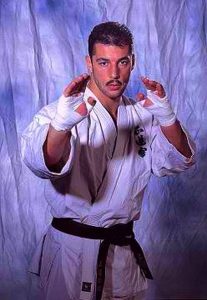
Accomplishments
- 1991 5th World Championship defeat by ippon to Francisco Filho
- 1991 1st place heavy weight European Championship
- 1989 1st place heavy weight 4ste Ibusu Cup
- 1987 2nd place 4th World Championship defeat by dicision to Shokei Matsui
- 1987 3rd place heavy weight European Championship
- 1985 1st place heavy weight 2nd Ibusu Cup
- 1985 1st place heavy weight European Championship
- 1983 1st place heavy weight 1ste Ibusu Cup
Titles:
- K-1 World Grand Prix 1998 Finalist
- K-1 World Grand Prix 1997 Finalist
- K-1 World Grand Prix 1996 Champion
- W.K.A. World & European Muay Thai Super Heavyweight Champion
- W.M.T.C World Super Heavyweight Champion
- U.K.F. World Super Heavyweight Champion
- Karate World Cup Finalist 1993
- Karate World Cup Champion 1992
Although this list was in no particular order, it seemed fitting to put the late Andy Hug in the No. 1 spot.
Andreas “Andy” Hug (September 7, 1964 – August 24, 2000) was a Swiss Kyokushin Karateka and Kickboxer who competed in the heavyweight division. Considered to be one of the greatest heavyweight kickboxers of all time. Hug began training in Kyokushin Karate at the age of ten in his native Switzerland.
Beginning his full contact karate career in the 80 kg/176 lb middleweight division, he rose to prominence in the late 1970s and early 1980s by winning numerous regional tournaments around Europe and made the transition to heavyweight in 1984. That same year, he competed in the Kyokushin World Open, knockdown karate’s most prestigious competition, for the first time and made it to the fourth round where he was eliminated by Shokei Matsui.
Returning to Europe, he won his first major title in the form of the 3rd European Championships in 1985 before entering World Open again in 1987. He became the first non-Japanese fighter to make it to the final of the competition but again lost to Shokei Matsui. Another European Championships win would follow in 1989 and he fought in his third and final World Open in 1991, losing a controversial bout to Francisco Filho in the third round.
Hug was renowned for his ability to execute numerous kicking techniques rarely seen in high level competition and although he was usually smaller than his opponents, standing at 1.80m (5ft 11in) and being barely a heavyweight, weighing around 98.0 kg (216.1lbs) in his prime, he made up for his lack of size with his tremendous athleticism and speed. A southpaw, his trademark kicks included the axe kick and the “Hug Tornado”, a low spinning heel kick targeting his opponents’ thighs.
Hug was very popular in Japan for his high-kicking victories in the K-1 competitions and for his appearances on television variety shows, with the nicknames bestowed upon him such as The Blue-Eyed Samurai, Iron Man (Tetsujin in Japanese), Mr. K-1 and Typhoon. He was depicted as a hero in “manga” comics and also appeared in an Ultraman movie.
Andy Hug was diagnosed with acute leukemia on August 17, 2000. On Aug 22 he also released the following statement:
“Dear Fans,
I think that you will be shocked when you hear in what state of health I am. When the doctor told me about it, it was an enormous shock even for myself. But I want to inform you about my state of health so that I can fight together with you against this illness. This illness is the most severe opponent of all my fights. But I will win. As if I would stand in the ring I will get power from your cheers and beat this strong opponent. Unfortunately I will not be able to fight at the tournament in October. I will fight against this illness in Japan and one day I will appear again with you. Don’t lose hope!
Greetings, Andy Hug”
Hug posted the message to his fans on the internet on August 22, 2000 after learning of his illness. On August 23, he fell into a coma and his illness was made public. Hug died on August 24th, 2000, following breathing difficulties due to multiple organ failure. He was thirty-five years old.
Hug’s funeral was held on August 27 in Kyoto where his body was cremated and his ashes deposited in the cemetery of the Hoshuin temple. Eight hundred guests including Kazuyoshi Ishii, Hajime Kazumi, Akira Masuda, Shokei Matsui, Kenji Midori and Swiss President Adolf Ogi attended while more than twelve thousand mourners gathered outside. K-1 fighters Francisco Filho, Nobuaki Kakuda and Nicholas Pettas were among the pall-bearers.
His legacy remains as a true legend in kickboxing and knockdown karate, as well as one of the greatest heavyweights in the history of both sports. Hug was the highest paid kickboxer in the world at one point and his matches in his native Switzerland, where he posted a perfect 6-0 record, drew a larger television audience than the tennis matches of Martina Hingis and the games of the Swiss national football team. In addition to his in-ring accomplishments, he was also known for his articulation, humility and strong work ethic.
